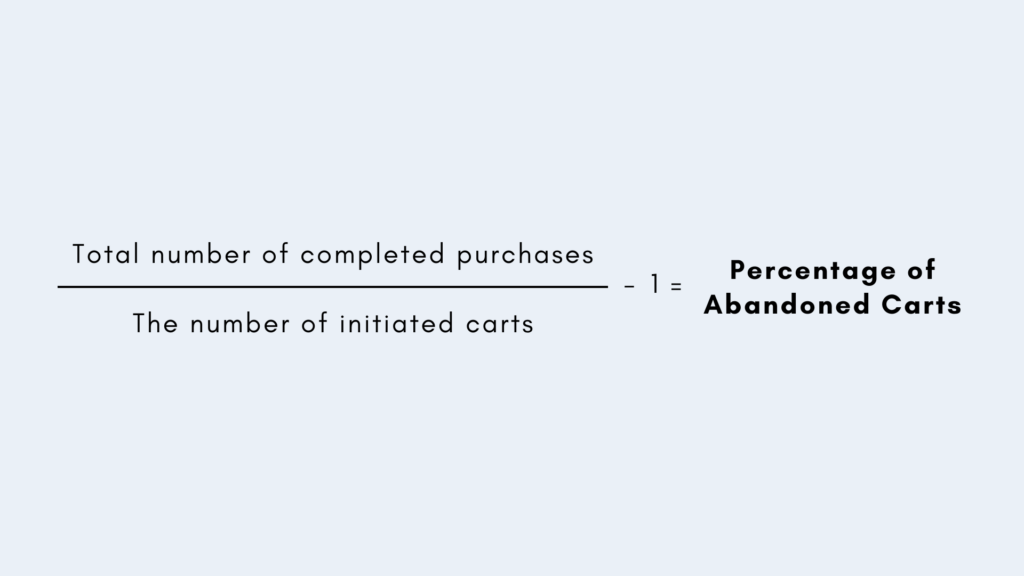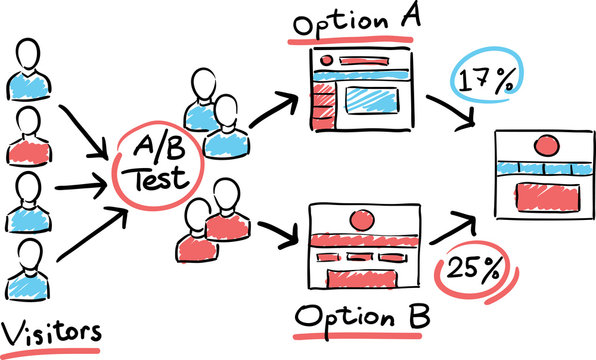
Shopping cart abandonment, the act of online shoppers adding items to their carts but leaving the website before completing the purchase, is a major challenge for e-commerce businesses. It impacts their bottom line and conversion rates.
Understanding why customers abandon carts is crucial for optimizing the sales funnel and boosting customer retention. This article explores the reasons behind cart abandonment and provides practical solutions to combat it and increase your online sales.
Table of Contents
Key Takeaways
- Address Friction Points: Identify and eliminate obstacles in the checkout process to reduce cart abandonment rates.
- Utilize Incentives: Offer discounts or promotions to incentivize customers to complete their purchases.
- Streamline Checkout: Simplify the checkout experience by minimizing steps and providing clear instructions.
- Guest Checkout Option: Implement a guest checkout feature to cater to customers who prefer a quick purchase process.
- Test and Optimize: Use A/B testing to experiment with different checkout strategies and optimize for higher conversions.
- Cart Recovery Tactics: Develop strategies to re-engage with customers who abandoned their carts, such as personalized emails or retargeting ads.
Understanding Cart Abandonment
Stages of Abandonment
Customers typically go through several stages before abandoning their shopping carts. First, they add items to the cart, then proceed to the checkout. Next, they might hesitate at the final step, leading to abandonment.
Impact on Businesses
Cart abandonment significantly impacts online businesses. Lost revenue is a major consequence, as potential sales are not converted. Moreover, operational costs rise due to efforts in remarketing and optimizing the checkout process.
Psychology of Abandonment
Customers abandon carts due to various psychological factors. Price comparisons play a crucial role; if they find better deals elsewhere, they are likely to abandon carts. Purchase hesitancy or indecision can lead customers to rethink their purchases. Lack of trust in the website’s security or product quality also contributes to abandonment.

Calculating Cart Abandonment Rate
Accuracy in Calculation
To calculate the cart abandonment rate, divide the total number of completed purchases by the number of initiated carts, then subtract this value from 1. This formula gives the percentage of abandoned carts.

Tracking tools and software can automate this process, providing real-time data on abandoned carts. By accurately calculating this rate, businesses gain insights into customer behavior.
Significance of Monitoring
Monitoring and analyzing abandonment rates are crucial for businesses. It helps in benchmarking progress and understanding customer preferences to enhance the shopping experience.
By studying these rates, companies can identify pain points in the checkout process, such as unexpected costs or complicated navigation, leading to improved conversion rates.
Industry Benchmarks
Comparing abandonment rates across industries provides valuable insights. For instance, the average rate varies between sectors; while retail may see a rate of around 70-80%, travel and finance tend to have lower rates due to different purchasing behaviors.
Benchmarking against industry standards allows businesses to gauge their performance and set realistic goals for reducing cart abandonment.
Optimizing Checkout Process for Frictionless Conversions
Limited Payment Options
Customers often abandon their shopping carts due to limited payment options. When people can’t use their preferred payment method, they are likely to leave without completing the purchase. Offering a variety of payment choices can significantly reduce abandonment rates.
Having only a few payment options creates friction during the checkout process. Customers may prefer using digital wallets like PayPal or Apple Pay, but if these options are lacking, they might choose to abandon their carts. Providing a diverse range of payment methods caters to different customer preferences and increases the chances of completing a transaction.

Complex Structures
Complex checkout structures also contribute to cart abandonment. When the process is lengthy or confusing, customers are more likely to give up on their purchase. Simplifying the steps required to complete a transaction can help streamline the process and prevent customers from leaving.
A cluttered and confusing checkout page can overwhelm customers, leading them to abandon their carts. By simplifying the design and layout of the checkout page, businesses can guide customers through the process more effectively. Clear instructions and intuitive design elements make it easier for customers to complete their purchases.
Secure Payment Options
Security concerns play a significant role in cart abandonment rates. Customers are hesitant to proceed with a purchase if they feel that their payment information is at risk. Implementing secure payment options, such as SSL encryption and trusted third-party processors, can help build trust with customers and encourage them to complete their transactions.
When customers see familiar and secure payment options during checkout, they are more likely to proceed with their purchases. Providing secure payment gateways instills confidence in customers and assures them that their sensitive information is protected. Building trust through secure transactions can lead to lower cart abandonment rates.
Mobile Optimization
Optimizing the checkout process for mobile devices is crucial in today’s digital landscape. With more people shopping on smartphones and tablets, businesses must ensure that their checkout pages are mobile-friendly. A seamless mobile checkout experience reduces friction for customers and enhances overall satisfaction.
Mobile users expect a fast and user-friendly checkout process when making purchases on their devices. By optimizing checkout pages for mobile responsiveness and usability, businesses can cater to this growing segment of shoppers. Streamlined mobile checkout experiences increase conversion rates and reduce cart abandonment among mobile users.
Minimal Form Fields
Implementing minimal form fields during checkout is another successful strategy to streamline the process. By only requesting essential information from users, such as shipping address and payment details, businesses can expedite transactions and prevent unnecessary delays.
Reducing the number of form fields not only speeds up the checkout process but also minimizes the chances of users abandoning their carts due to frustration or impatience. This approach aligns with the principle of simplicity in design, enhancing overall user satisfaction.
Progress Indicators
Integrating progress indicators into the checkout process provides users with a clear overview of their current position in the transaction funnel. These visual cues offer transparency and guidance, allowing consumers to anticipate how much more information they need to provide before completing their purchase.
By incorporating progress bars or step-by-step indicators, e-commerce platforms can instill a sense of control and direction in their users, reducing anxiety and uncertainty during checkout. This proactive approach helps mitigate confusion and encourages consumers to proceed with their purchases confidently.
Guest Checkout Benefits
Guest checkout is a strategy that allows users to make purchases without creating an account. This streamlined approach eliminates the need for lengthy registration processes, reducing friction and enhancing user experience.
By offering guest checkout, e-commerce websites can cater to consumers who prioritize convenience and speed. This simple yet effective method significantly expedites the checkout process, leading to higher conversion rates and reduced shopping cart abandonment.

Leveraging Incentives to Drive Conversions
Offering incentives plays a significant role in encouraging customers to complete their purchases and reducing cart abandonment rates. Discounts, free shipping promotions, and other strategic offers can effectively nudge customers towards conversion.
Discount Strategies
Various types of discounts, such as coupons or sales, can incentivize customers to finalize their purchases. Studies show that discounts not only attract new customers but also encourage repeat purchases.
Implementing time-sensitive discounts can create a sense of urgency, prompting customers to make immediate buying decisions. Personalizing discounts based on customer behavior or preferences can further increase conversion rates. By tailoring discounts to individual customers, businesses can enhance customer loyalty and boost sales.
The Impact of Free Shipping
Free shipping offers have a significant psychological effect on customer decisions. Research indicates that high shipping charges often lead to shopping cart abandonment, as customers perceive additional fees as an extra cost. By providing free shipping, businesses can capitalize on this opportunity to attract more customers and drive conversions.
Case studies have demonstrated the effectiveness of free shipping in reducing lost sales due to excessive shipping charges. For example, implementing free shipping thresholds where customers qualify for free shipping after reaching a certain purchase amount has proven successful in increasing average order values and overall sales.

Successful Implementation Examples
Stripe, a leading online payment platform, successfully implemented a free shipping promotion during the holiday season. By offering free shipping on all orders for a limited time, Stripe saw a significant increase in website traffic and conversions. This strategy not only reduced shopping cart abandonment but also resulted in higher customer satisfaction levels.
Another example is an online clothing retailer that implemented targeted discount offers based on customer browsing history. By sending personalized discount codes via email addresses collected during the checkout process, the retailer saw a substantial decrease in abandoned carts and an increase in repeat purchases. This demonstrates the power of leveraging incentives tailored to individual customer behaviors.
A/B Testing for Checkout Optimization
Testing Layouts
A/B testing involves comparing two versions of a webpage to see which one performs better. In the context of checkout optimization, this means testing different layouts, button placements, colors, and CTAs (calls to action) to determine the most effective design.
A/B testing helps in analyzing user behavior, allowing businesses to make data-driven decisions. By comparing different checkout page designs, companies can understand what resonates best with their customers.

Identifying Effective Changes
Through A/B testing, businesses can pinpoint specific elements that lead to shopping cart abandonment. For instance, if one version of the checkout process has a significantly higher conversion rate than another, it indicates that certain design or functionality aspects are more appealing to customers.
By identifying these factors, companies can tweak their checkout process to reduce friction and increase conversions. For example, changing the color of a “Buy Now” button or simplifying the form fields can have a significant impact on conversion rates.
Statistical Significance
When conducting A/B tests for checkout optimization, it’s crucial to ensure that the results are statistically significant. This means that any observed differences in performance between the two variations are not due to random chance.
Businesses need to analyze the data collected from A/B tests using statistical methods to determine whether the changes made have a meaningful impact on conversion rates. Without statistical significance, it’s challenging to draw accurate conclusions about which version of the checkout process is truly more effective.
Cart Recovery Strategies
Personalized Emails
Crafting personalized abandoned cart email campaigns is crucial for enticing customers to complete their purchases. By addressing customers by name and recommending products based on their browsing history, businesses can significantly increase the chances of conversion. Including urgency elements like limited-time offers or low stock alerts can create a sense of FOMO (fear of missing out), prompting customers to act swiftly.
Implementing clear calls to action in these emails is essential. Directing customers back to their abandoned carts with prominent buttons and links simplifies the process, making it easier for them to pick up where they left off. Providing incentives such as discounts or free shipping can further motivate customers to finalize their purchases.

Retargeting Ads
Utilizing retargeting ads is another powerful strategy to recover lost sales from abandoned carts. By displaying ads featuring the exact products customers showed interest in, businesses can reignite their desire to make a purchase. These ads serve as gentle reminders, keeping the products fresh in customers’ minds and encouraging them to revisit the website and complete their transactions.
Retargeting ads are effective in reaching out to potential customers who may have gotten distracted during the checkout process. Through strategic ad placements on various platforms visited by the target audience, businesses can maintain visibility and stay connected with interested shoppers.
Exit-Intent Popups
Exit-intent popups are valuable tools for capturing customers’ attention before they leave the website without completing a purchase. These popups trigger when a visitor shows signs of exiting the page, offering them an enticing deal or discount to encourage them to stay and finalize their transaction. By providing a last-minute incentive, businesses can effectively reduce cart abandonment rates and boost conversions.
Leading e-commerce businesses have successfully implemented innovative cart recovery strategies to engage with customers effectively:
- Amazon: Utilizes personalized recommendations based on browsing history in their abandoned cart emails.
- Nike: Leverages retargeting ads across social media platforms to showcase products that customers viewed but did not purchase.
- Sephora: Uses exit-intent popups offering exclusive deals or gifts to entice visitors into completing their purchases.
Closing Thoughts
You’ve learned how to tackle cart abandonment, calculate rates, and optimize your checkout process. By addressing friction points, offering incentives, and simplifying the experience, you can significantly boost conversions. Implement guest checkout, conduct A/B tests for better results, and don’t forget cart recovery strategies to win back lost sales.
Take action now and see a significant impact on your bottom line! By addressing cart abandonment, you can create a smoother customer journey and unlock significant growth potential for your online store.
Related Article:
The following article may contain the author’s opinions and interpretations of the subject matter. Any of the products, services, or platforms mentioned is not sponsored or affiliated.
Featured Image courtesy of rawpixel.com on Freepik
